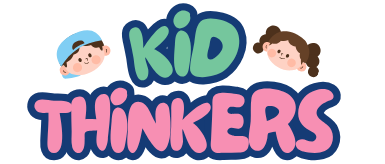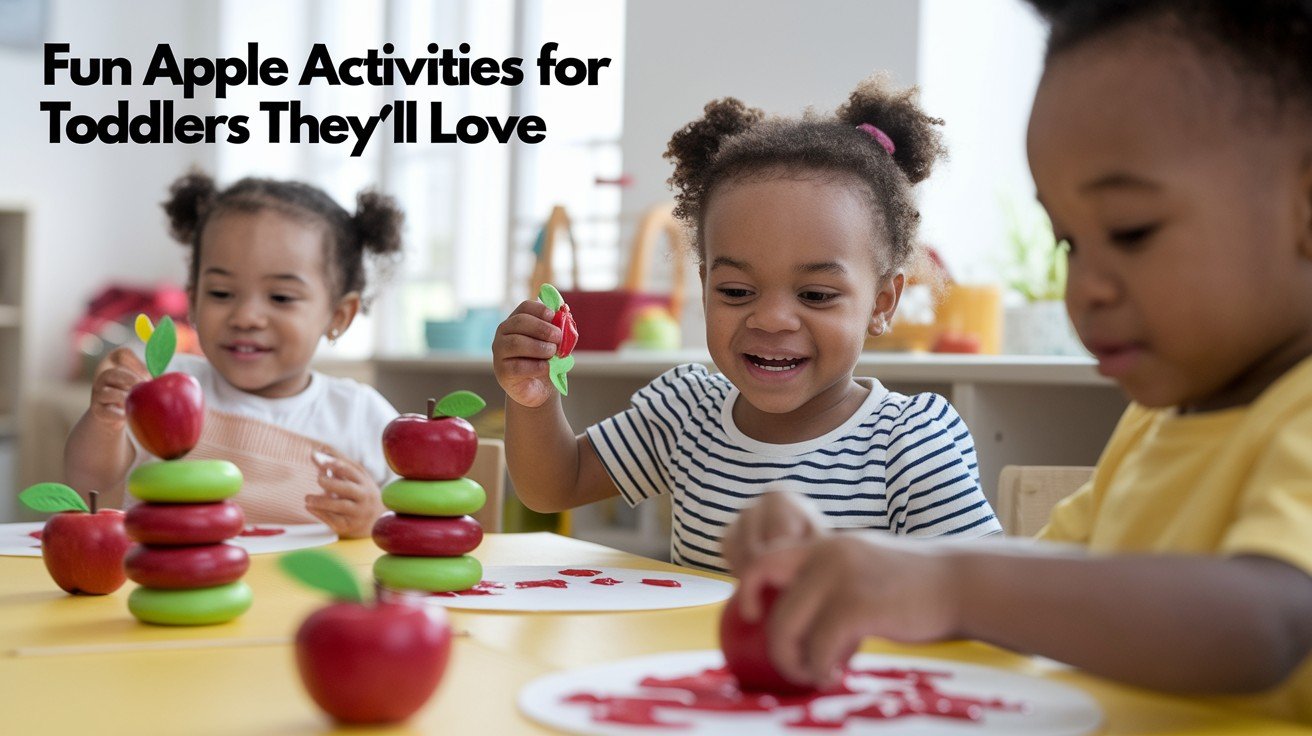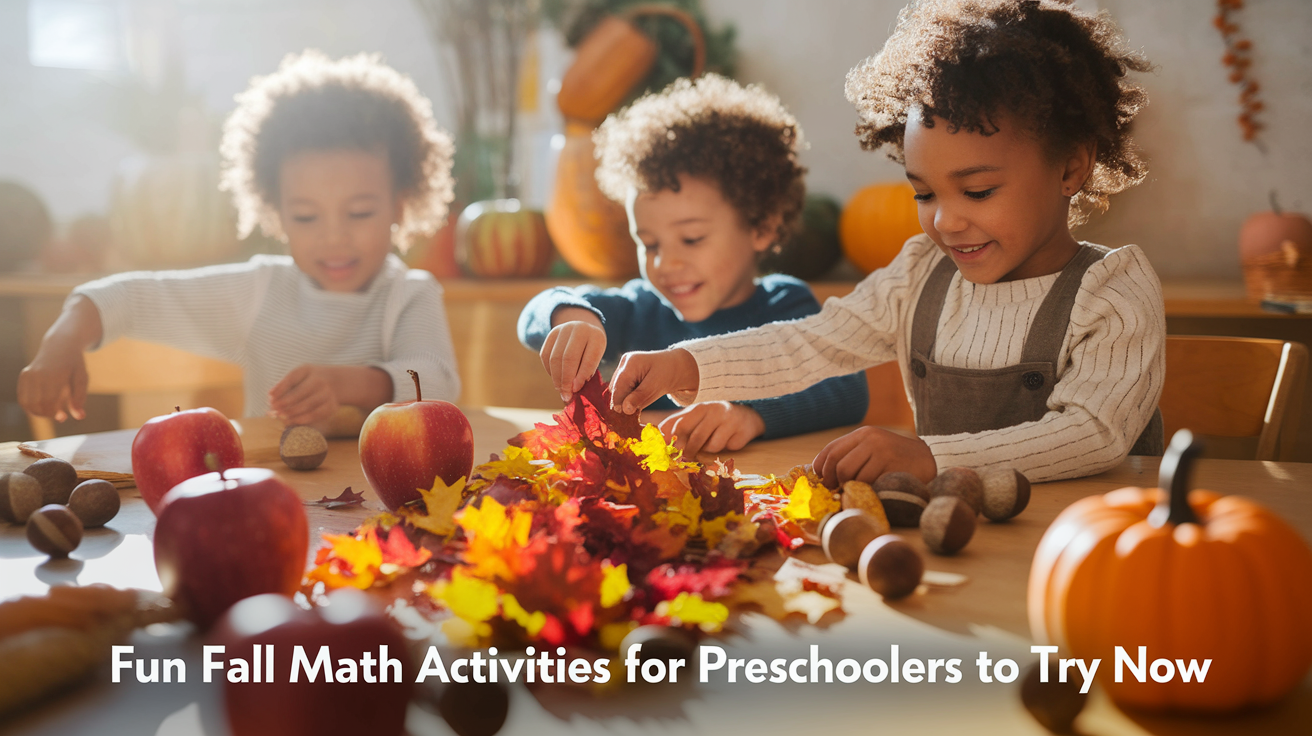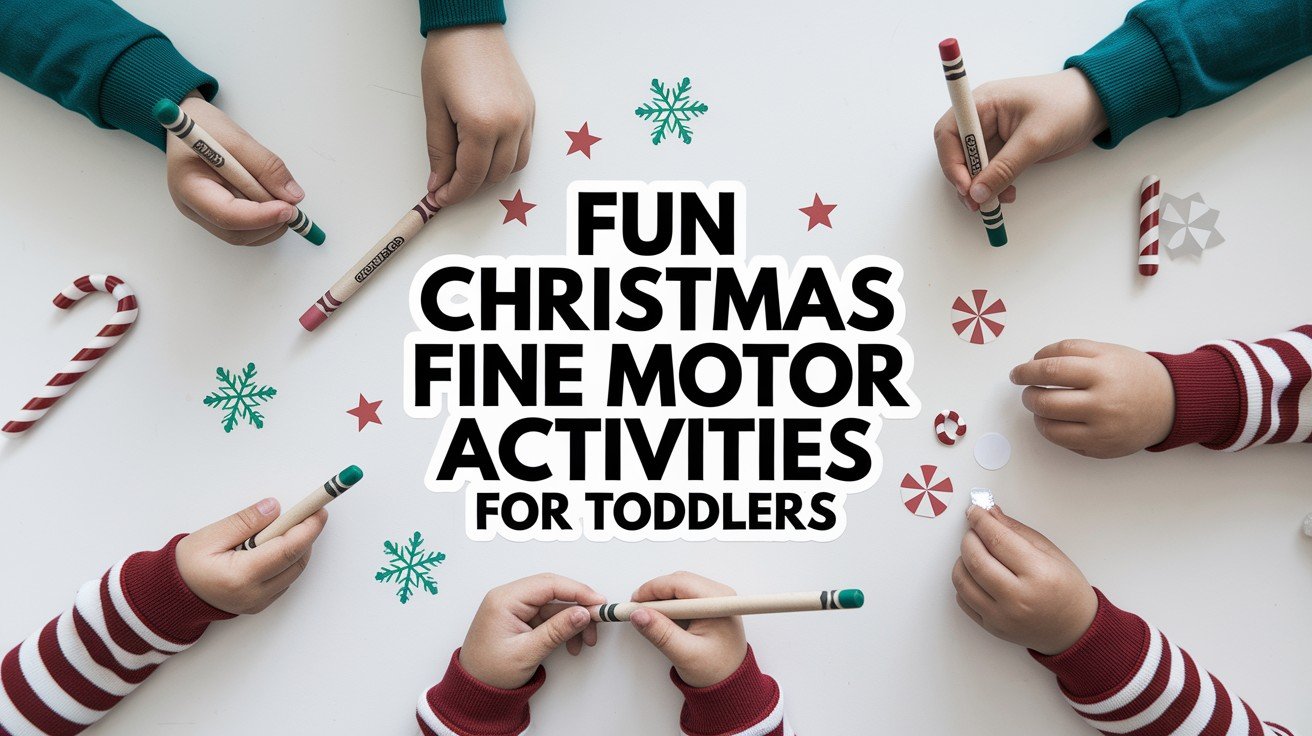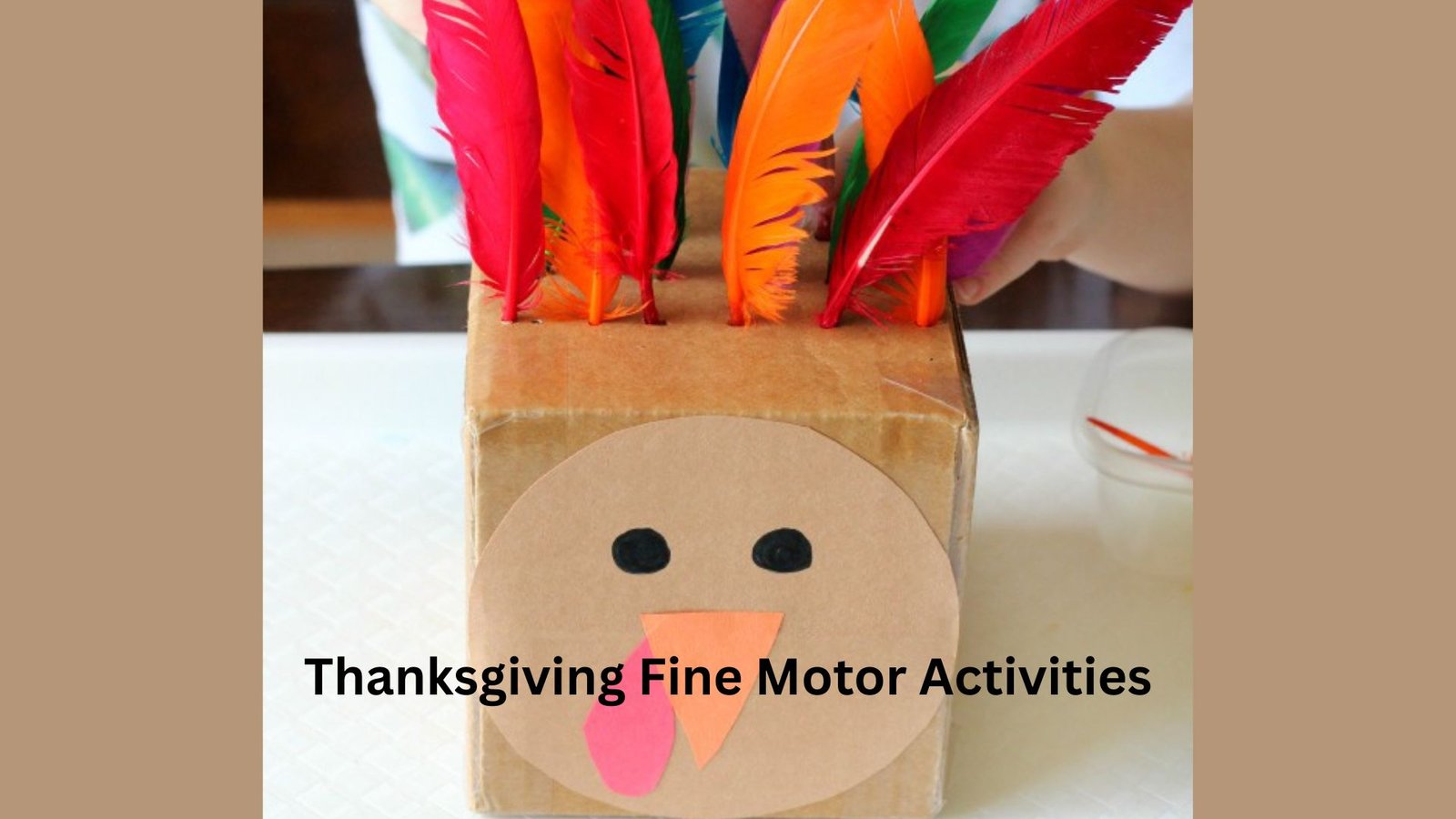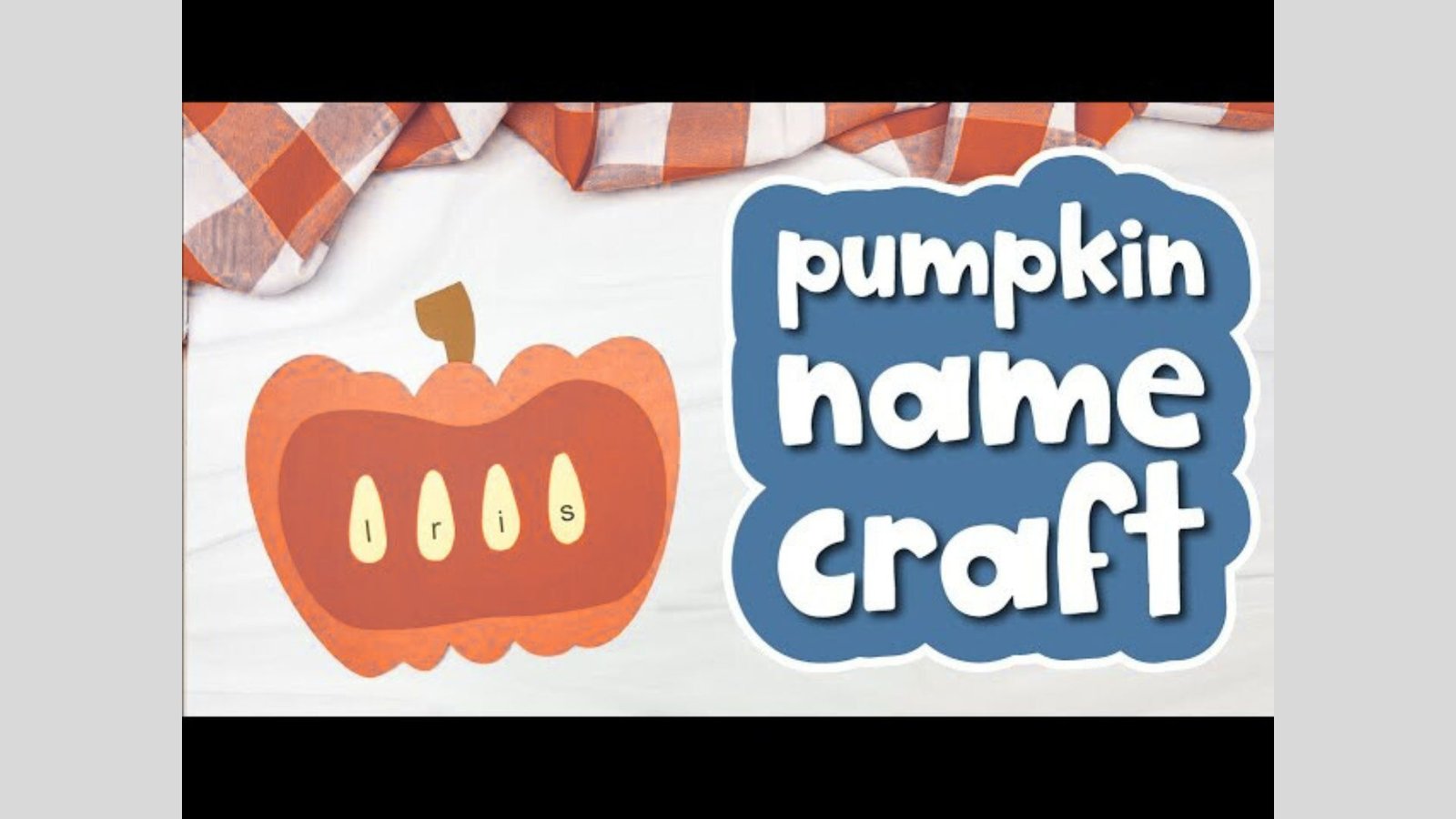Apples are wonderful for you to use when you are teaching toddlers. Kids already know about them and eat them. They can also get excited about them all. Apples thus become simple themes for teaching at home or school.
Over the years, I’ve used Apple activities for toddlers. What have I learned? Simple works best. Lesson plans that are complicated or fancy materials are not needed. A real apple, some paint, and construction paper can teach more than any expensive kit.
This guide is about sharing 11 apple activities meant for toddlers. They are activities of actual work. You’ll find simple crafts, number games, tactile learning ideas, and feeling bins. You possess many often-used items already.
Apple Activities for Toddlers
Cut an apple in half, dip it in washable paint, and press it onto paper to create apple-shaped prints that toddlers can turn into faces or artwork using googly eyes, crayons, and imagination.
Apple Stamping
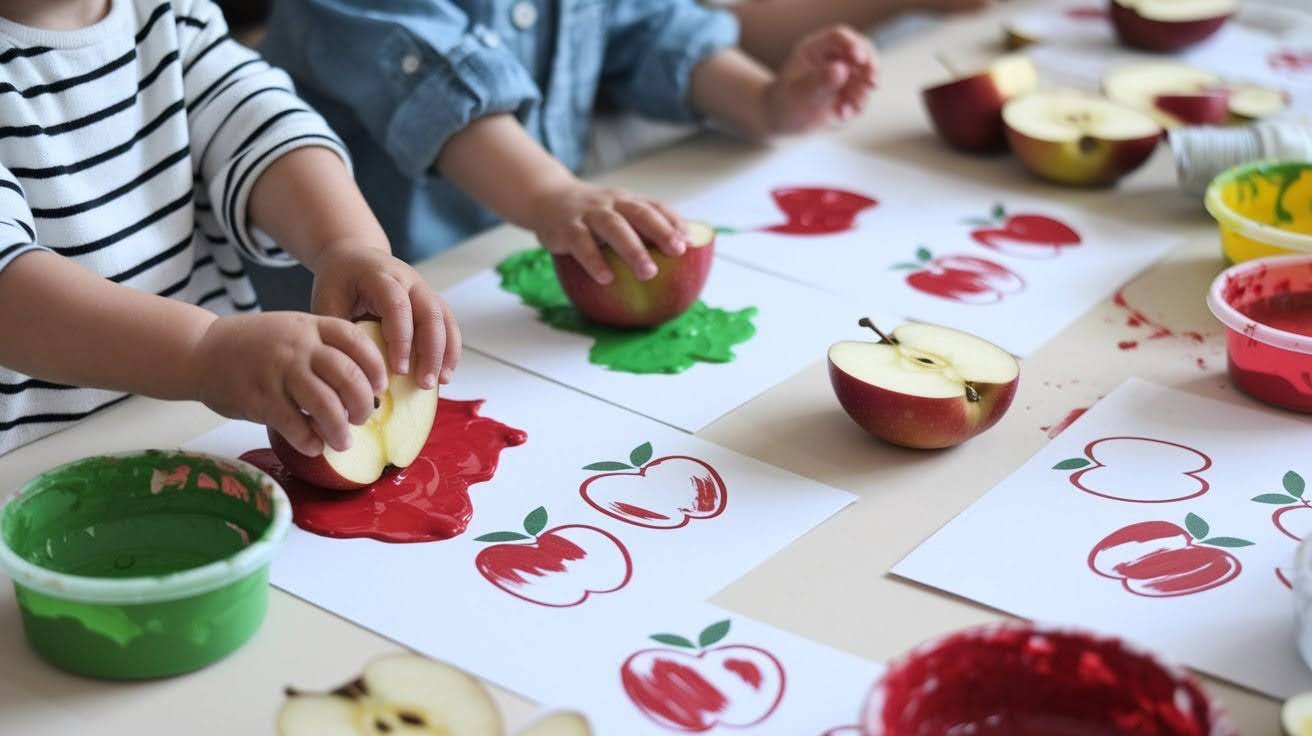
Cut an apple in half and you’ve got the perfect stamp. Dip it in paint and press it onto paper. Simple as that. I’ve watched toddlers spend 20 minutes just stamping apples in different colors.
You only need an apple, washable paint, and paper. Red and green paint work great, but let your toddler pick the colors. They love seeing the apple shape appear on the page. It’s different from brush painting, which makes it more interesting.
Try adding googly eyes or drawing stems on the dried prints to make apple faces. Or have your child “sign” their artwork with a crayon. It makes a great gift for grandparents and builds early writing skills at the same time.
Apple Findy Sensory Bin
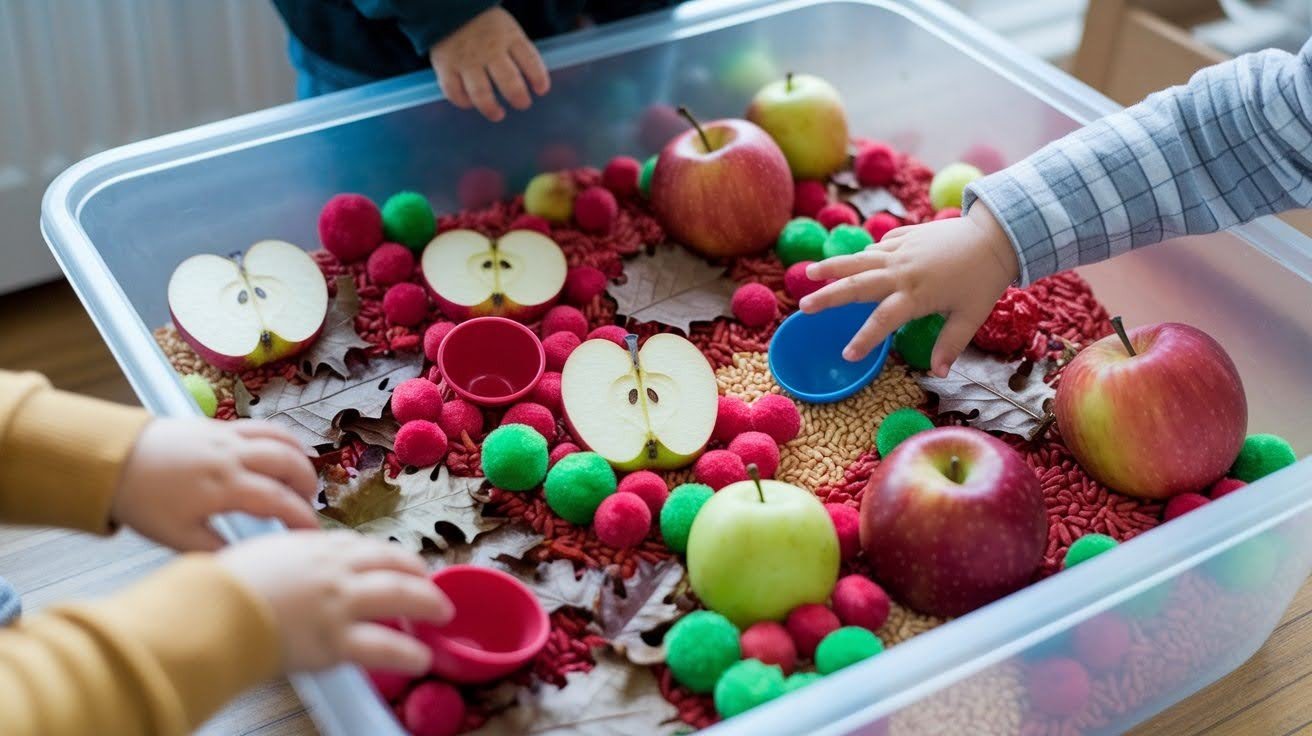
This is hands-down one of my favorite activities. Fill a sensory bin with real apple parts, flesh, skin, seeds, stem, core, leaves, and halves. Let your toddler find each piece. Real apples teach more than pictures ever could.
Start with a taste test. Let your child choose which colored apple to try. Circle it on a simple sheet and mark whether they liked it. Spoiler, they almost always do. That positive experience sets the tone for everything else.
Then show them each apple part. Pick up the stem. Name it. Let them touch it. Move to the seeds, the core, the skin. Provide small bowls for sorting. Do this one-on-one if possible. The individual attention makes the learning stick. When you’re done, dump it all back in the bin and start over with another child.
Apple Cloud Dough
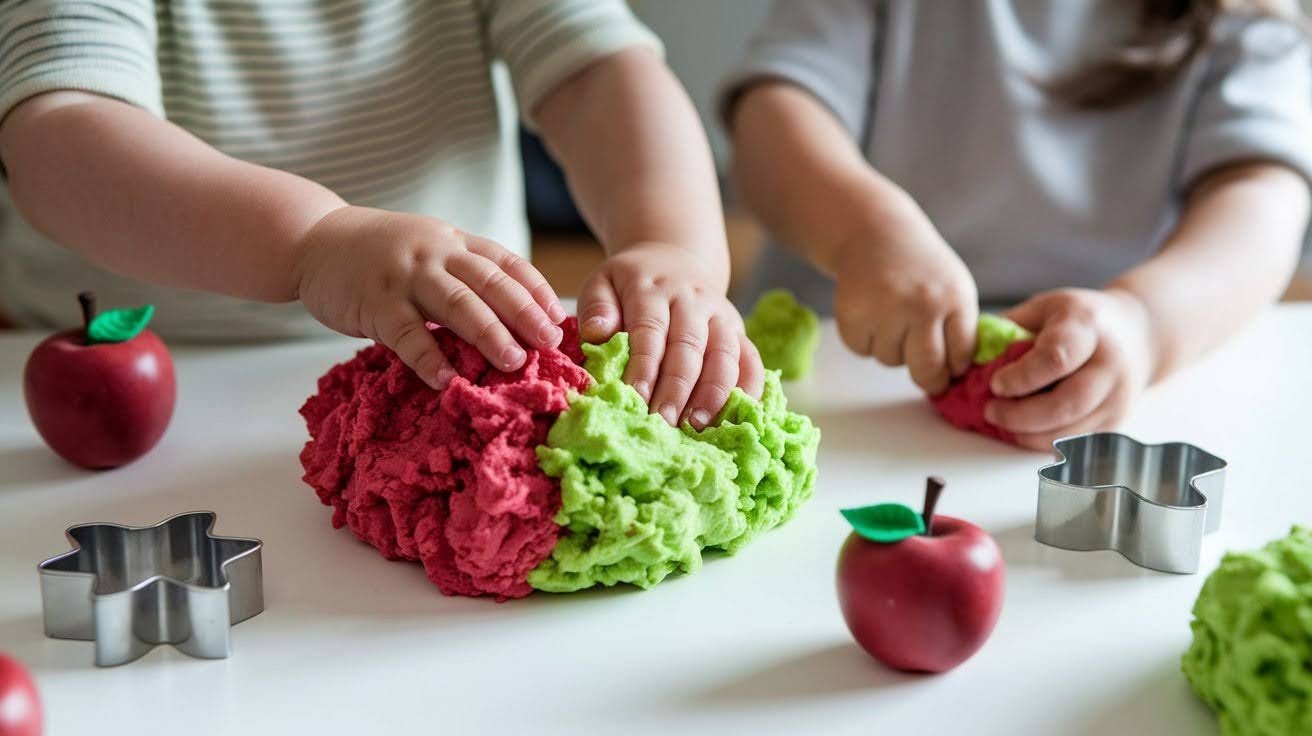
Mix 7 cups of flour with 1 cup of vegetable oil, and you’ve got cloud dough. It’s soft, moldable, and keeps toddlers busy for surprisingly long stretches. Add apple pie spic, and it smells amazing.
If you don’t have apple pie spice, make your own: 1.5 tablespoons cinnamon, 1.5 teaspoons nutmeg, and 1 teaspoon allspice. Throw in apple-shaped toys, small kitchen utensils like whisks and spoons, and a red bucket for scooping. Your toddler will dig, pour, mold, and create.
This works best outdoors or in a water table to contain the mess. Keep it in a container with a lid, and it stays good for weeks. The sensory benefits are huge: hand-eye coordination, fine motor skills, vocabulary building, and just plain fun.
A is for Apple Paper Tear Craft
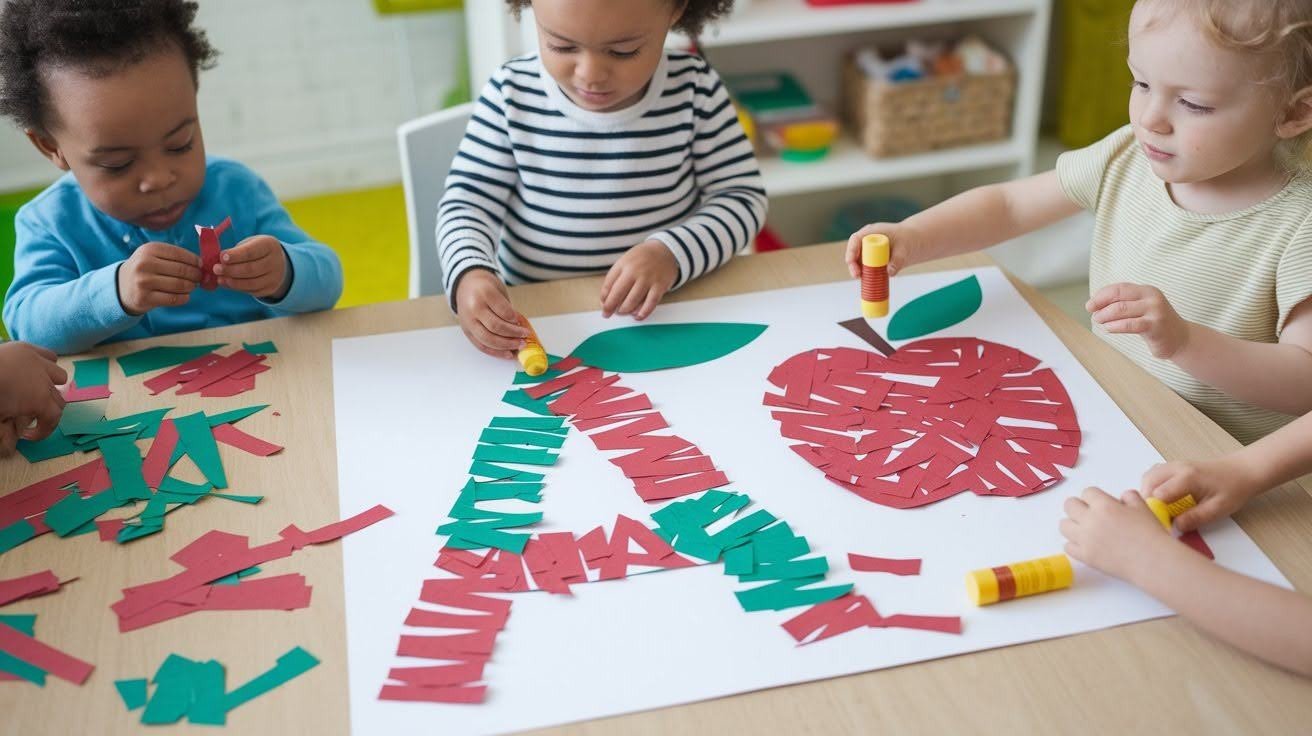
Print a large letter “A” on paper. Give your toddler strips of red, green, and yellow construction paper. Let them tear the paper into pieces and glue them onto the letter. That’s it.
Some kids want to tear paper with their hands. Others want to use scissors to cut it into tiny pieces. Both work perfectly. Let them choose. This is one of the easiest crafts to set up, and the results look great on a bulletin board.
This activity builds fine motor skills, whether they’re tearing or cutting. Plus, they’re learning letter recognition without even realizing it. The gluing practice helps, too; those small hand muscles need lots of work before writing becomes easy.
Apple Seed Counting Sensory Bin
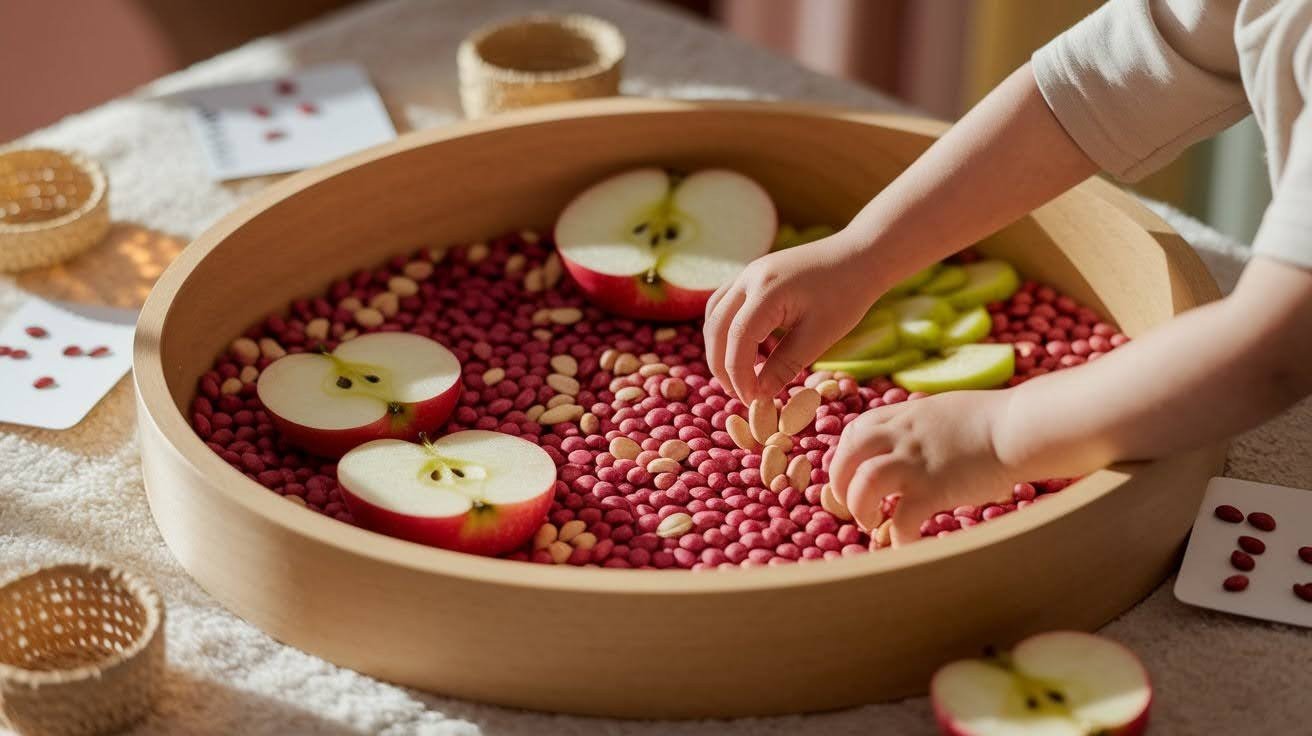
Fill a sensory bin with dry oats and black beans. The oats create that apple-y feel (don’t ask me why, it just works), and the black beans become “apple seeds.” Add child-safe tweezers and apple counting cards numbered 1-10.
Your toddler uses the tweezers to pick out “seeds” from the bin and place them on the apple cards. This is harder than it looks for little hands. That’s why it’s so good for them. They’re building the hand strength and control they’ll need for writing later.
The activity covers counting, one-to-one correspondence, and fine motor skills all at once. When they’re done, mix the beans back into the oats, and it’s ready for the next round.
Apple Sorting by Color
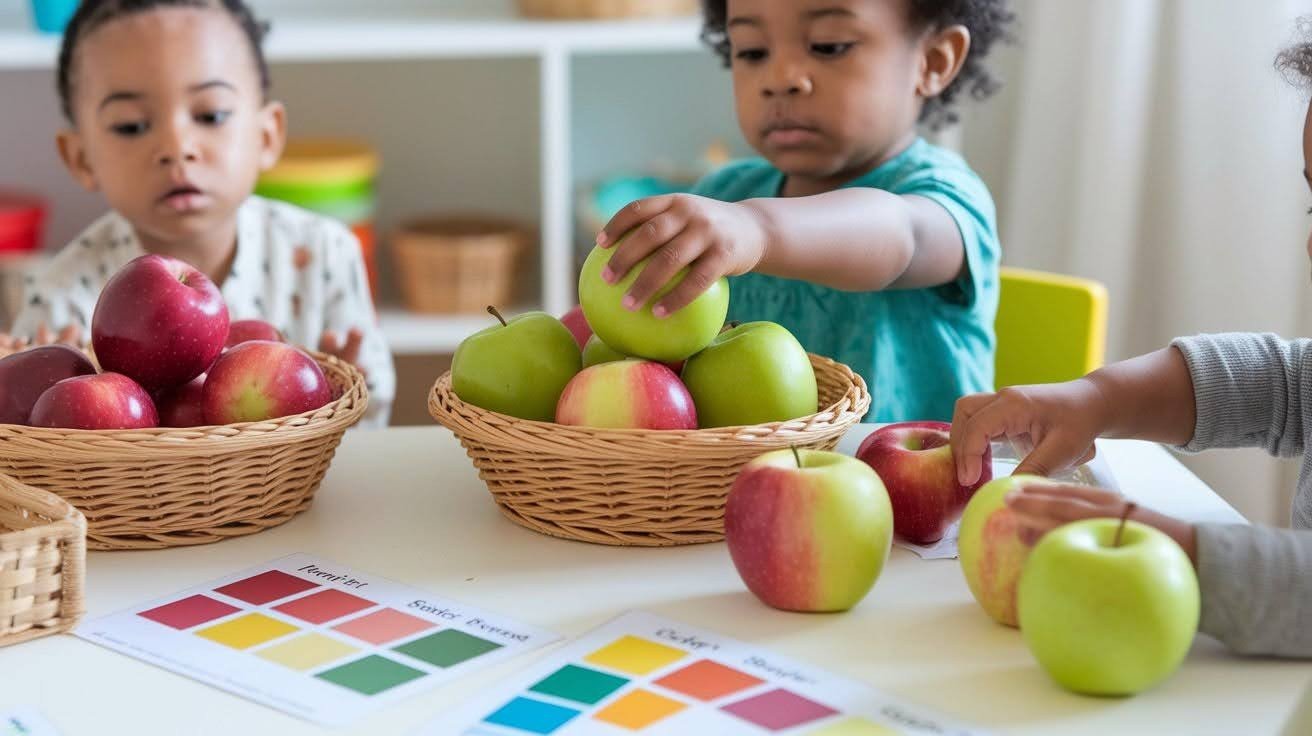
Get red apples and green apples. Provide two baskets. Let your toddler sort them by color. Simple but effective. Count together as they place each apple in its basket.
When all the apples are sorted, count how many of each color. Then put them all back in one basket and count again. You’ve just practiced counting three different times in one activity. That repetition is exactly what toddlers need.
Use real apples if you have them. Toy apples work too. The key is letting your child do the sorting. Don’t rush in to correct if they put a red apple in the green basket. Let them figure it out or gently ask, “Does this apple match the others in this basket?”
Apple Number Line Activity
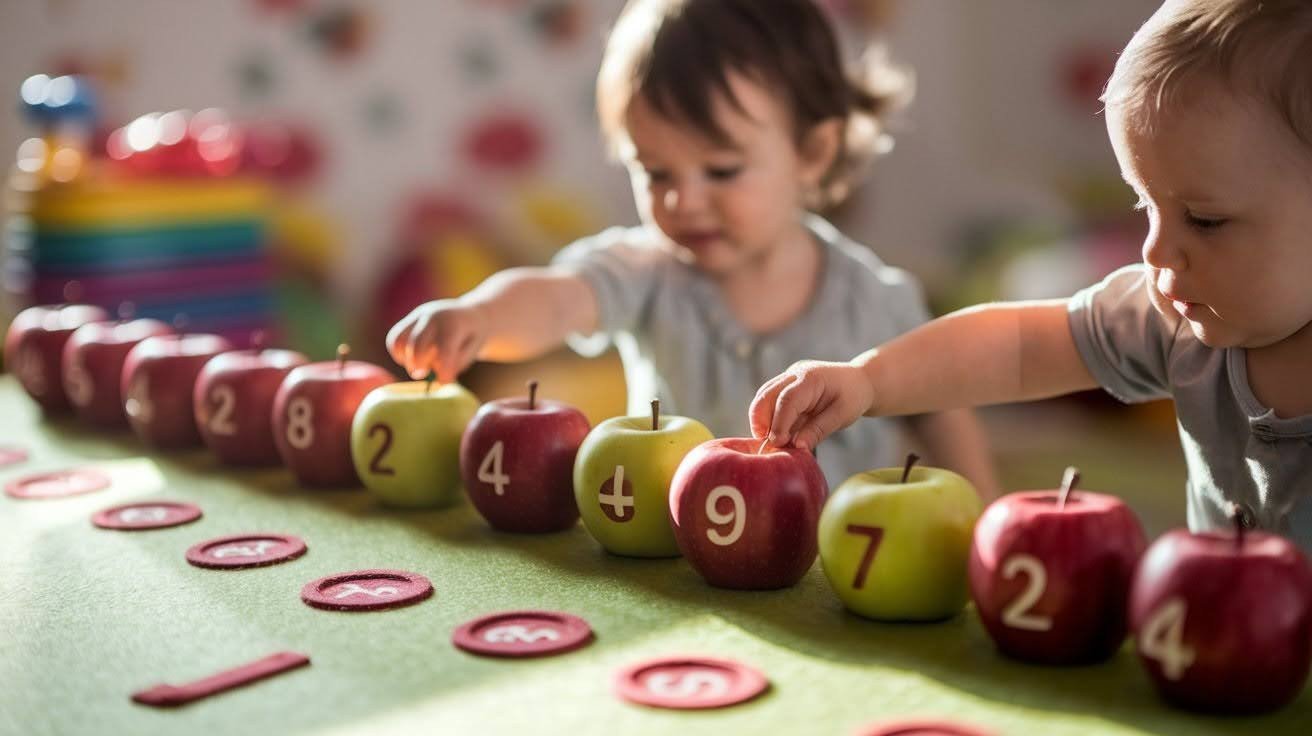
Make a number line from 1 to 10 using paper apples from the dollar store. Write one number on each apple. Lay them out in order on the floor or table. Now you’ve got multiple activities in one setup.
First, point out and count the numbers together. Then have your child place real apples on top of the paper apples while counting. Next, have them uncover each paper apple and say the number. Finally, pick up the real apples one by one and count them back into the basket.
That’s four different counting activities from one simple setup. This is the kind of repetition that builds real number sense. Your toddler isn’t just memorizing, they’re understanding what numbers mean.
Apple Basket Process Art
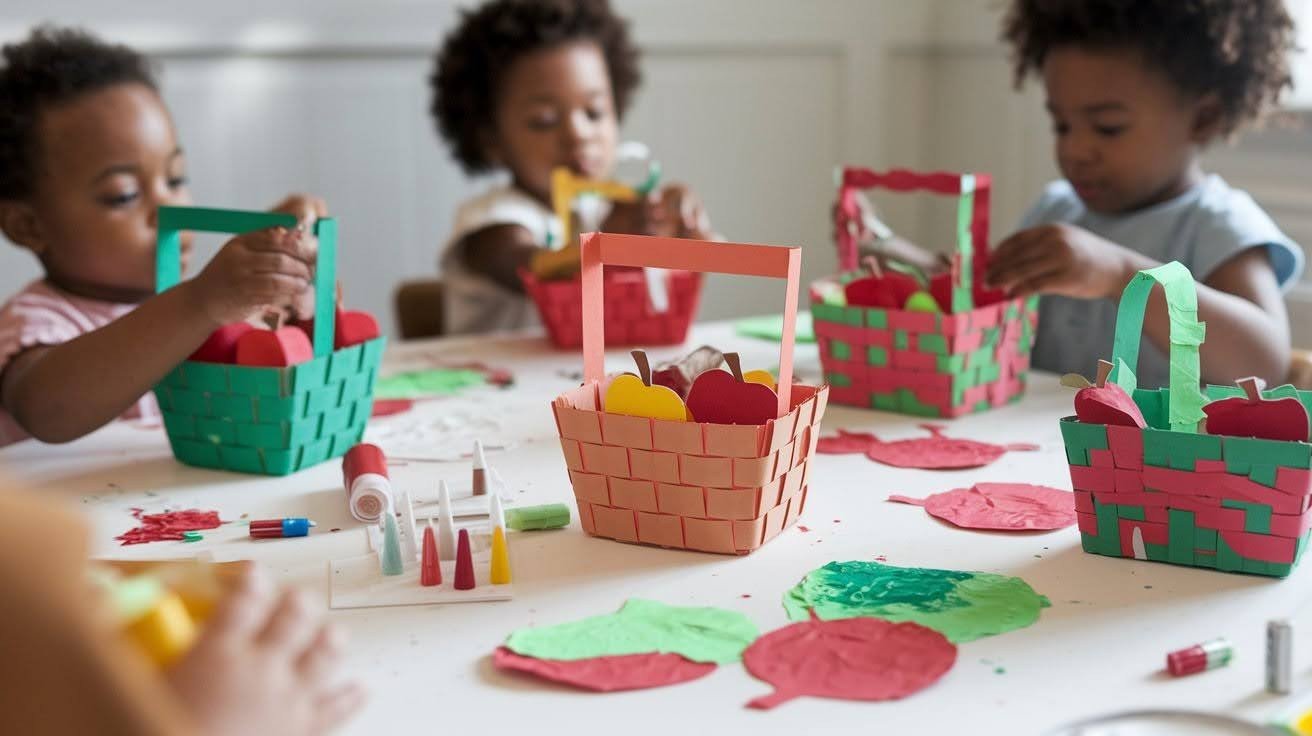
Cut an apple in half. Cut small slits in it to create handles your toddler can grip. Pour red paint into a shallow bowl. Give your child the apple basket template and let them stamp away.
Fair warning, this can get messy. Some kids carefully stamp each apple in a neat pattern. Others use the apple to paint everything within reach red. Both are fine. Both are learning. The mess is part of the process.
This activity teaches your toddler about stamping versus painting. They see how the apple shape transfers to paper. They practice hand control. And they create something that actually looks like art worth hanging up.
Circle Apple Craft (Two Ways)
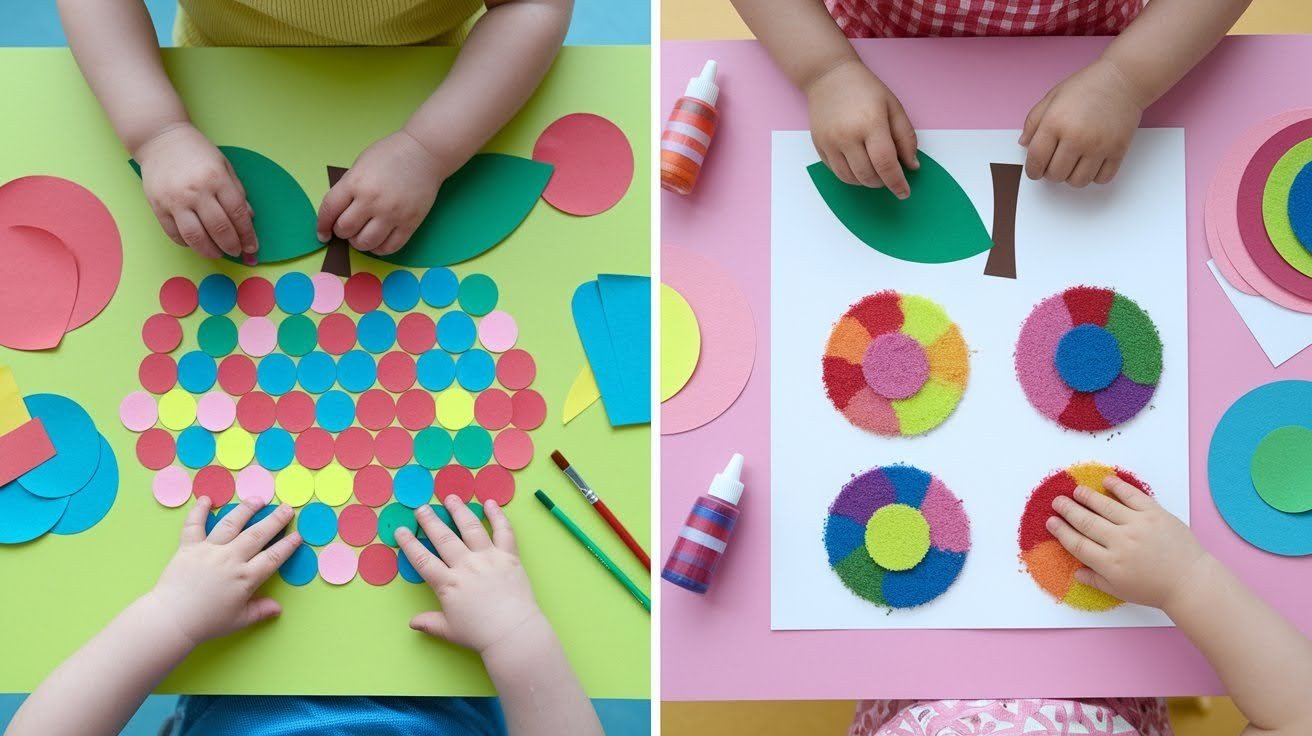
Make this craft work for different skill levels. For kids who can use scissors, have them cut out different-sized circles from construction paper and glue them together to create an apple shape. I’m always impressed by how well some toddlers can cut.
For younger kids, print a bingo dot marker apple template. They fill each circle with a dot marker. You’re still focusing on circle shapes, but without the cutting challenge. Both versions teach the same concept at different levels.
This is what good teaching looks like: the same goal, different paths. Your toddler learns about circles either way. The method just matches their current ability.
Apple Life Cycle Activity
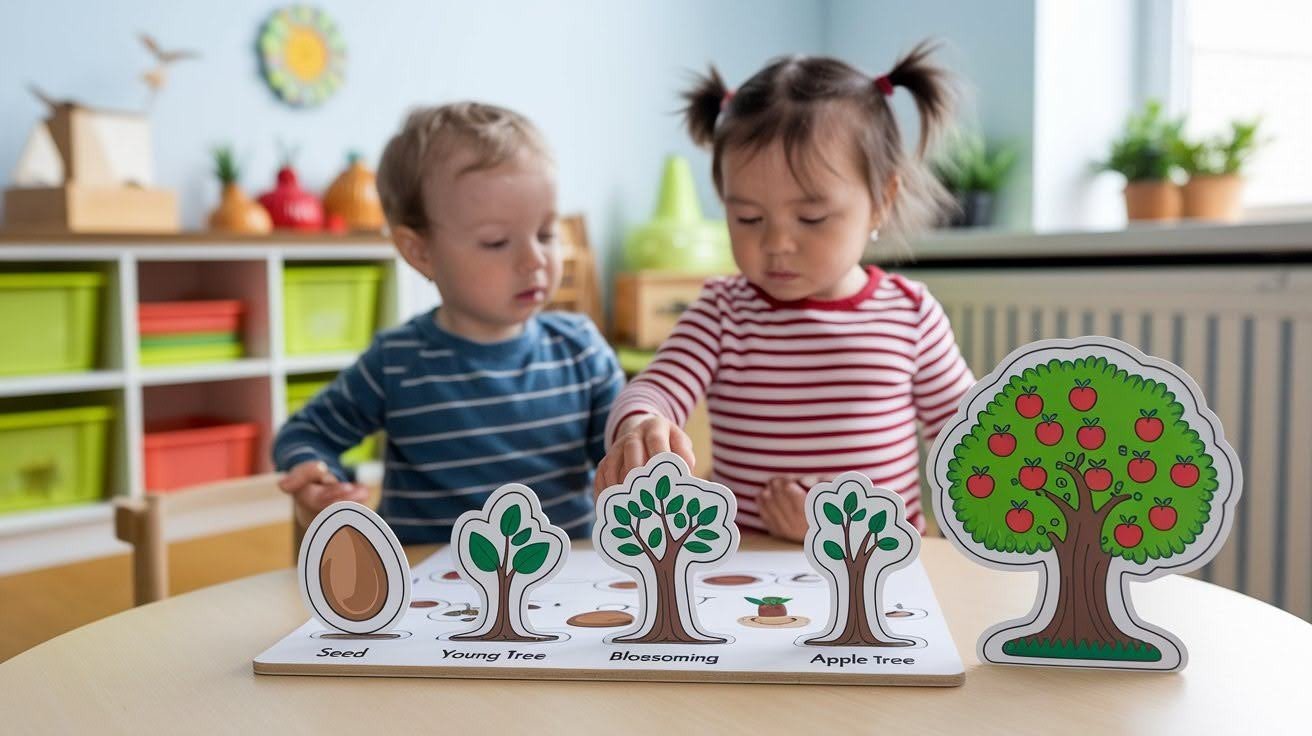
Read “From Seed to Apple Tree” with your toddler. Then, create the life cycle together using poster pieces and a circle time board. Use velcro dots or double-sided tape so pieces stick to the board.
Ask your child what comes first. Let them place the seed. What’s next? The sprout. Keep going until the life cycle is complete. Kids love adding pieces to the board. It makes them feel like they’re teaching you.
This activity builds sequencing skills and introduces basic science concepts. Your toddler learns that apples don’t just appear; they grow through stages. That’s pretty big thinking for a little person.
Apple Tree Counting with Play-Doh
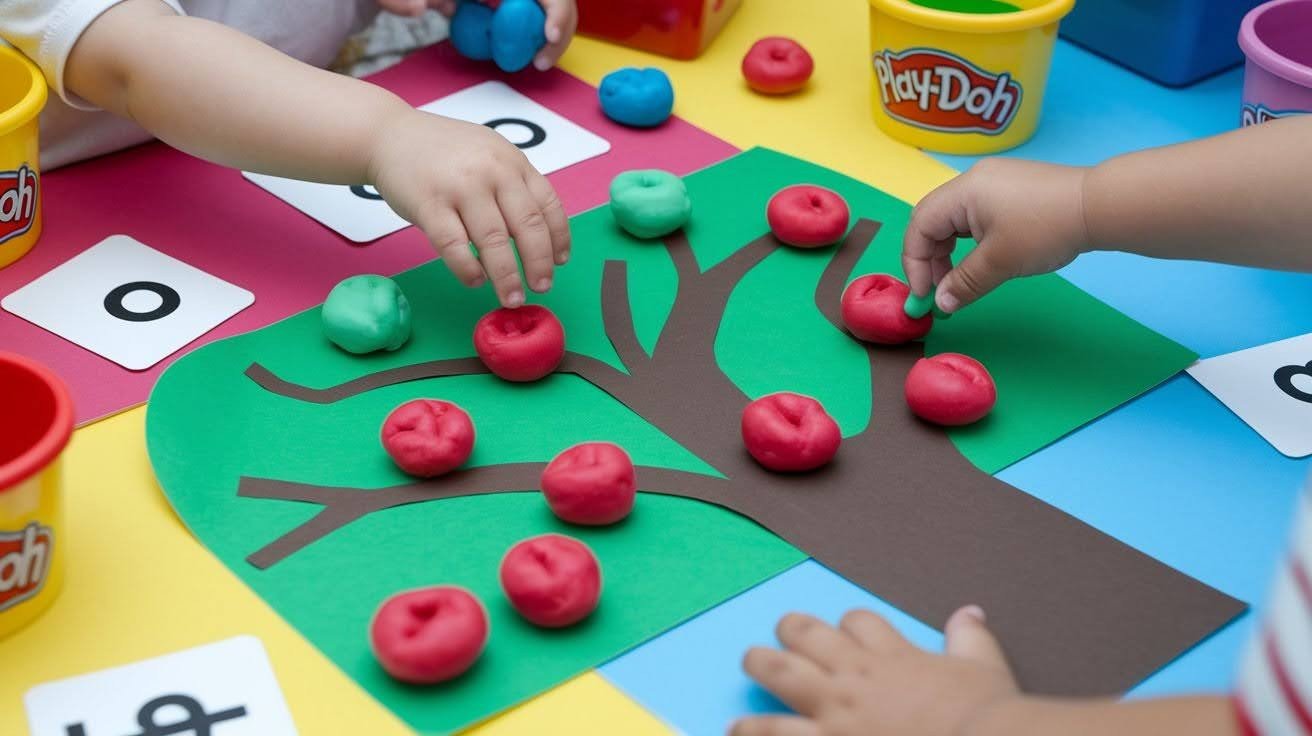
Print and laminate tree counting mats numbered 1-10. Provide Apple mini erasers and Play-Doh. Your toddler places the correct number of erasers on the tree, then rolls dough balls to fill the ten-frame at the bottom.
You can skip laminating and use sheet protectors instead; it saves money and works just as well. The combination of placing erasers and rolling dough gives two different fine motor experiences in one activity.
This teaches number recognition, counting, and ten frames. Ten frames are huge for math later. Starting early with them pays off when your child hits kindergarten and beyond.
Apple Stand Dramatic Play
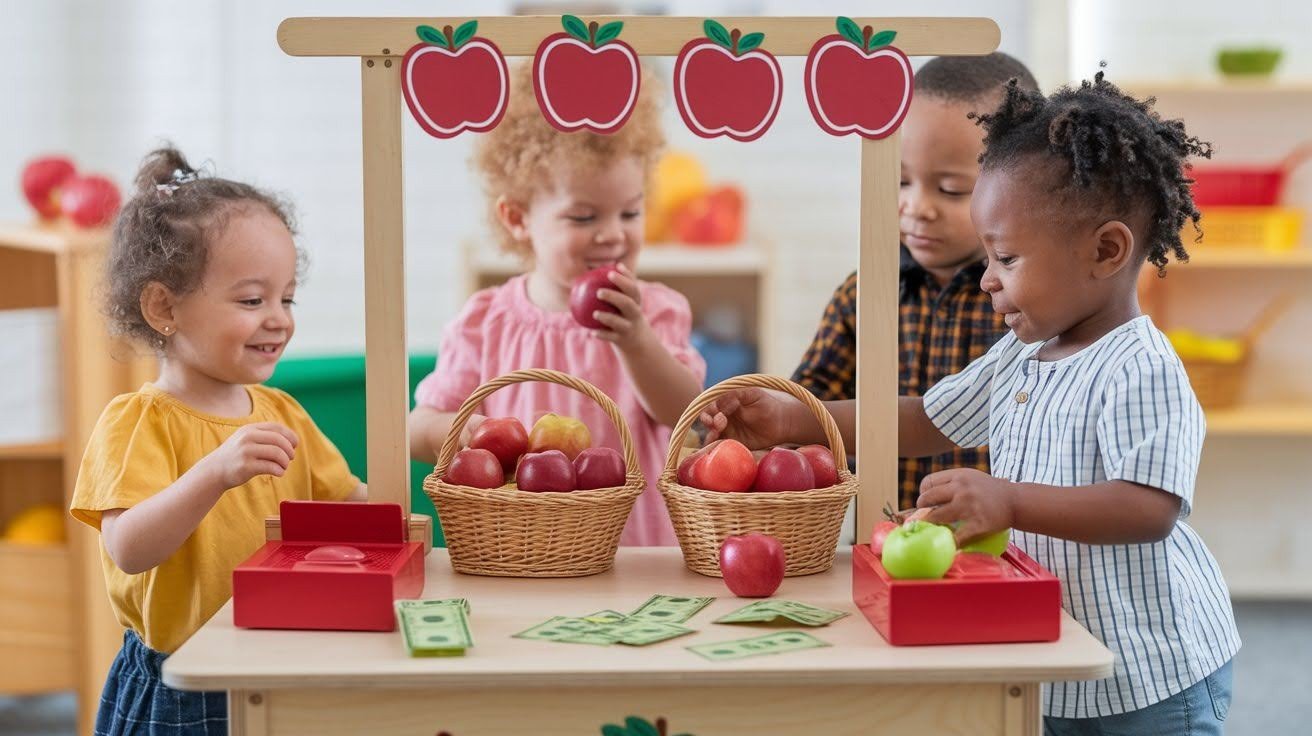
Set up a small market stand with play apples, play money, and order forms. Make DIY apples by crumpling paper, wrapping it in felt, and tying it with a clear band. Add any apple-related play food you already have.
Show your toddler how the stand works. Here’s the money. Here’s where customers order. Then step back and let them play. This is an “open center” activity. No rules. No right way. Just imagination.
I’ve watched kids spend 30 minutes running their apple stand. They’re building vocabulary, practicing social skills, and learning about buying and selling. All through play that feels nothing like a lesson.
Tips for Success with Apple Activities
Use what you have, reuse materials, work on one, make a cleanup routine, and connect to books: simple strategies that make apple activities work better.
- Keep prep simple. Use what you already have at home. An apple from your kitchen teaches just as much as an expensive toy. Construction paper works better than specialty craft supplies. The best activities don’t require a trip to the store.
- Reuse materials differently. Fill one sensory bin with oats and change what you add to it each day. Use it for counting with beans one time, then sorting with apple cards the next. Your toddler sees a new activity while you’re just swapping out a few items.
- Do activities in small groups or one-on-one. Individual attention creates better learning moments than big groups. You catch teachable moments you’d otherwise miss. Yes, rotating kids through takes more time, but the focused learning makes it worth it.
- Make cleanup part of the routine. Say “First we play, then we clean” every single time. Keep damp cloths within reach. Set up a specific drying spot for wet artwork. These small systems stop messes from taking over your space.
- Connect everything to books. Read Apple stories before starting activities. Reference the books while you work together. Ask “Remember in the story when…?” These connections help your toddler remember what they learned much better than activities alone.
Conclusion
These apple activities prove that meaningful learning for toddlers can be created without complicated plans. Counting, colors, fine motor skills, and science concepts are taught with some paint, a real apple, and basic craft supplies at once.
I have seen these projects help young children of all abilities in class for years. One three-year-old who rarely would sit still spent 25 minutes at just the apple sensory bin, for that child sorted and then counted up seeds. Learning that is hands-on with something familiar has all of that power.
What Apple pursuit will you begin with? Please do comment below in order to let me know how it goes. Parents learn through my experiences. I learn just about as much from their experiences.
Frequently Asked Questions
What age are Apple activities for toddlers best suited for?
These apple activities work best for ages 2-5. Younger toddlers (2-3) should start with simpler activities like apple stamping and sensory bins. Older preschoolers (4-5) can handle activities requiring scissors, like the circle craft, and more complex counting games. Always supervise and adjust based on your child’s skill level.
Do I need special supplies for apple activities?
No. Most activities use items you already have, such as real apples, construction paper, paint, glue, and Play-Doh. A few activities suggest mini erasers or dollar store items, but these are optional. The best learning happens with simple, accessible materials. Real apples teach more than fancy apple-shaped toys.
How long do Apple activities keep toddlers engaged?
Most activities hold attention for 10-20 minutes, perfect for toddler attention spans. Sensory bins like apple cloud dough can entertain for longer, sometimes 30+ minutes across multiple play sessions. Stop when your child loses interest. Short, repeated activities build skills better than forcing one long session.
Can I do apple activities indoors without making a huge mess?
Yes, with simple prep. Cover surfaces with newspaper or old tablecloths. Keep damp cloths nearby for quick cleanups. Dress kids in old clothes or smocks. Activities like apple stamping and paper crafts create minimal mess. Save sensory bins for outdoors or contained spaces like water tables.
What skills do Apple activities teach toddlers?
Apple activities build multiple skills at once, fine motor control through cutting and gluing, early math through counting and sorting, science concepts from exploring apple parts, vocabulary from naming colors and textures, and sensory processing. The familiar apple theme makes learning feel like play rather than lessons.
